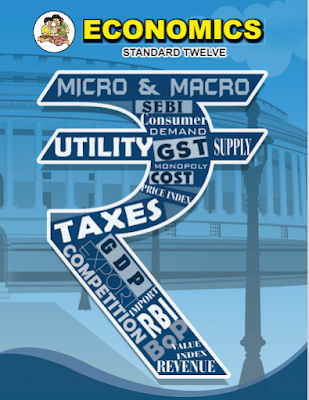Chapter - 8 Public Finance in India
Q. 1. A) Choose the correct option :
1) Optional functions of Government :
a) Protection from external attack
b) Provision of education and health services
c) Provision of social security measures
d) Collection of tax
Options : 1) b and c
2) a, b and c
3) b, c and d
4) All of the above
2) Obligatory functions of the Government :
a) Provision of employment
b) Maintaining internal law and order
c) Welfare measures
d) Exporting goods and services
Options : 1) c and d
2) a and b
3) only b
4) a, c and d
3) "Definition - Public finance is one of those subjects which are on the borderline between economics and politics." ......... given by
a) Adam Smith
b) Alfred Marshall
c) Prof. Hugh Dalton
d) Prof. Findlay Shirras
Options : 1) only a
2) only b
3) only c
4) only d
4) Non-tax sources of revenue :
a) Direct and Indirect Tax
b) Direct Tax and Fees
c) Fees
d) Special Levy
Options : 1) b and c
2) a and c
3) a, b, c and d
4) c and d
5) Trends shown by Public expenditure of any Government shows following trend.
a) Constant
b) Increasing
c) Decreasing
d) Fluctuating
Options : 1) only a
2) only b
3) only c
4) only d
6) Identify the right group of pairs from the given options.
i) Direct tax
a) Non-tax revenue
ii) Indirect tax
b) Inflation
iii) Fees and Fines
c) GST
iv) Surplus budget
d) Personal income tax
Options : a) i-d ii-c iii-b iv-a
b) i-c ii-d iii-a iv-b
c) i-d ii-c iii-a iv-b
d) i-a ii-b iii-c iv-d
Q. 2. Distinguish between following concepts :
1) Public finance and Private finance.
2) Internal debt and External debt.
3) Developmental expenditure and Non-developmental expenditure.
4) Special assessment and Special levy.
5) Direct Tax and Indirect tax.
Q. 3. State with reasons whether you agree or disagree with the following statement :
1) Obligatory function is the only function of the Govenment.
2) Fines and penalties are a major source of revenue for the Government.
3) The goods and services tax (GST) has replaced almost all indirect taxes in India.
4) Democratic Governments do not lead to increase in public expenditure.
5) Public finance is more elastic than private finance.
Q. 4. Read the given passage and answer the questions :
“The conventional notion of social security is that the government would make periodic payments to look after people in their old age, ill-health, disability and poverty. This idea should itself change from writing a cheque for the beneficiary to institutional arrangements to care for beneficiaries, including by enabling them to look after themselves, to a large extent. The write-a-cheque model of social security is
a legacy from the rich world at the optimal phase of its demographic transition, when the working population was numerals enough and earning enough to generate the taxes to pay for the care of those
not working. This model is ill-suited for less, welloff India with growing life expectancy, increasing urbanization and resultant migration. Social security under urbanization will be different from social
security in a static society.
1) State the conventional notion of social security.
2) What kind of conceptual change is suggested in the given paragraph.
3) What is a legacy of social security from the rich world?
4) Which features of India make the traditional model of social security ill-suited for the economy?
Q. 5. Answer the following :
1) State the types and importance of Government budget.
2) Explain the principles of taxation.
3) Explain non-tax sources of revenue of the Government.
Q. 6. Answer in detail :
1) Explain various reasons for the growth of public expenditure.





0 Comments